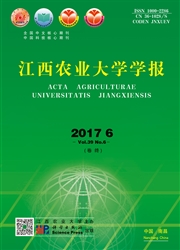

 中文摘要:
中文摘要:
为探明棉铃虫(Helicoverpa armigera)滞育诱导的光敏感性的地理变异,本文系统调查了棉铃虫江西永修种群、山东泰安种群和辽宁喀佐种群幼虫在20℃,交替接受长光周期(L16:D8)和短光周期(L12:D12)下的滞育诱导的光敏感阶段。当用5 d长光周期干扰生长在短光周期(L12:D12)背景条件下的幼虫时,最高光敏感期:永修种群出现在4龄第4天至5龄第3天(77.5%~93.7%个体发育),泰安种群出现在3龄第5天至5龄第1天(64.06%~89.55%个体发育),喀佐种群出现在第6龄(57.69%~60.78%个体发育)。当泰安和喀佐种群幼虫分别饲养在交替的短光周期(L12:D12)和长光周期(L16:D8)时,泰安种群幼虫光敏感龄期主要出现在5龄前,而喀佐种群幼虫光敏感龄期主要出现在4龄后。这些结果揭示了棉铃虫滞育诱导的光敏感性存在地理变异。
 英文摘要:
英文摘要:
In order to understand whether there is geographic variation of photosensitive larval instar for diapause induction in Helicoverpa armigera,the sensitive stage for photoperiodic induction of pupal diapause was investigated by transferring larvae between long photoperiod(L16:D8) and short photoperiod(L12:D12) under the condition of 20 ℃ in 3 different geographic populations(Yongxiu,29.04°N,115.82°E;Taian,36.15°N,116.59° E;Kazuo,41.34°N,120.27°E).When the photoperiodic background of L12:D12 was interrupted by 5× L16:D8 at different larval stages,the most photosensitive stage occurred in the L4/4 to the L5/3 stages for Yongxiu population,the L3/5 to the L5/1 stages for Taian population and the L6 stage for Kazuo population.When Taian population and Kazuo population were exposed to alternating short photoperiod and long photoperiod,respectively,Taian population showed the most photosensitive stage before the fifth instar,Kazuo population showed the most photosensitive stage after the fourth instar.These results reveal that the most photosensitive stages are different in different geographic populations in H.armigera.
 同期刊论文项目
同期刊论文项目
 同项目期刊论文
同项目期刊论文
 Inheritance of photoperiodic induction of larval diapause in the Asian corn borer Ostrinia furnacali
Inheritance of photoperiodic induction of larval diapause in the Asian corn borer Ostrinia furnacali 期刊信息
期刊信息
